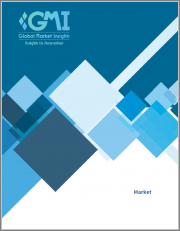
퀴나크리돈 안료 시장 규모는 환경 문제에 대한 관심의 증가와 지속가능한 제품에 대한 요구에 의해 2023-2032년 6.5% 이상의 CAGR이 전망됩니다.
퀴나크리돈 안료는 환경 친화적 인 특성과 낮은 독성으로 인해 친환경적이고 지속가능한 화학에 대한 세계적인 추세와 일치합니다.
또한 우수한 착색력과 내광성으로 인해 자동차 페인트, 플라스틱, 잉크 등 다양한 산업에서 높은 인기를 누리고 있습니다. 각 회사는 인수, 제휴, 제품 출시 등의 전략을 통해 시장에서의 입지를 넓혀가고 있습니다. 예를 들어 2021년 7월 DCL Corporation은 미국 사우스캐롤라이나에 위치한 Sun Chemicals의 제조 시설을 인수했습니다. 그 목적은 페릴렌과 퀴나크리돈의 판매 및 마케팅을 확대하는 것이었습니다.
퀴나크리돈 안료 시장은 색상, 형태, 최종 용도 및 지역별로 나뉩니다.
바이올렛/블루 부문은 2032년까지 높은 매출을 창출할 것으로 예상됩니다. 이 안료들은 바이올렛과 블루 스펙트럼에서 다양한 색조를 제공하며, 아티스트용 페인트, 자동차 코팅, 섬유 인쇄 등의 용도에 이상적이기 때문입니다. 뛰어난 투명성과 높은 착색력으로 선명하고 순수한 색상을 구현하는 능력은 바이올렛과 블루 퀴나크리돈 안료의 채택을 촉진하고 있습니다. 이 안료는 독특하고 매혹적인 색조를 만들어내는 능력으로 인해 고급 화장품 및 퍼스널케어 제품에서도 인기가 높아지고 있습니다.
키나크리돈 안료는 다양한 포장재에 선명하고 눈길을 끄는 디자인을 부여하는 데 널리 사용되기 때문에 인쇄 및 포장 분야는 2032년까지 높은 수요를 보일 것으로 예상됩니다. 우수한 분 산성과 색상 일관성으로 인해 퀴나크리돈 안료는 인쇄 업계에서 선호되는 안료입니다. 퀴나크리돈 안료는 제품 포장의 시각적 매력을 높이고 제품을 선반에서 눈에 띄게 만들어 소비자의 관심을 끌 수 있습니다. 또한 퇴색과 번짐에 대한 내성은 인쇄물의 긴 수명을 보장하여 라벨, 포장 및 장식용으로 적합합니다.
아시아태평양의 퀴나크리돈 안료 산업은 급속한 산업화, 호황을 누리고 있는 자동차 부문, 중국 및 인도와 같은 국가의 중산층 인구 증가로 인해 2032년까지 큰 폭의 성장을 보일 것으로 예상됩니다. 프리미엄 품질의 소비재에 대한 관심 증가와 가처분 소득 증가로 인해 페인트, 코팅, 플라스틱, 섬유 등 다양한 용도에서 퀴나크리돈 안료의 채택이 증가하고 있습니다. 아시아태평양 시장은 선명하고 내구성이 뛰어난 색상에 대한 수요가 지속적으로 증가함에 따라 향후 수년간 큰 폭으로 성장할 것으로 예상됩니다.
Quinacridone pigments market size is expected to observe more than 6.5% CAGR from 2023 to 2032 owing to the growing environmental concerns and the need for sustainable products. Quinacridone pigments are favored for their eco-friendly nature and low toxicity, aligning with the global trend towards green and sustainable chemistry.
Additionally, the impressive color strength and lightfastness of the product make them highly sought after in various industries, including automotive coatings, plastics, and inks. The companies are expanding their footprint in the market by leveraging strategies such as acquisition, partnership, and product launched. For instance, in July 2021, DCL Corporation acquired the manufacturing facility of Sun Chemicals in South Carolina, US. The goal was to increase the sale and marketing of perylene and quinacridone.
Quinacridone pigments market is divided based on color, form, end-use, and region.
The violet/blue segment is predicted to generate high revenue by 2032 as these pigments offer a wide range of shades within the violet and blue spectrum, making them ideal for applications like artist paints, automotive coatings, and textile printing. The ability to achieve vibrant, pure colors with excellent transparency and high tinting strength has propelled the adoption of violet and blue quinacridone pigments. These pigments are becoming increasingly popular even in high-end cosmetics and personal care products due to their ability to create unique and captivating shades.
The printing & packaging segment will witness high demand through 2032 attributed to quinacridone pigments being extensively used to create vivid and eye-catching designs on various packaging materials. Their excellent dispersibility and color consistency make them a preferred choice for the printing industry. Quinacridone pigments enhance the visual appeal of product packaging, making products stand out on the shelves and capturing the attention of consumers. In addition, their resistance to fading and bleeding ensures the longevity of printed materials, making them suitable for labels, packaging, and decorative applications.
Asia Pacific quinacridone pigments industry size is anticipated to observe significant growth through 2032 due to rapid industrialization, booming automotive sector, and a growing middle-class population in countries like China and India. The rising interest in premium quality consumer goods and increasing disposable income are propelling the adoption of quinacridone pigments in various applications, including paints, coatings, plastics, and textiles. The Asia Pacific market is expected to witness significant expansion in the coming years as the demand for vibrant and durable colors continues to rise.